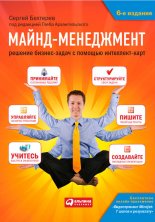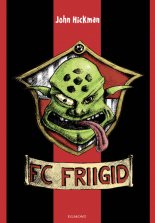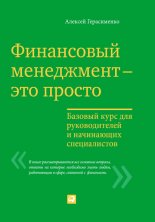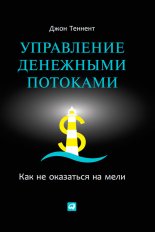Ѕибли€ триатлета ‘рил ƒжо
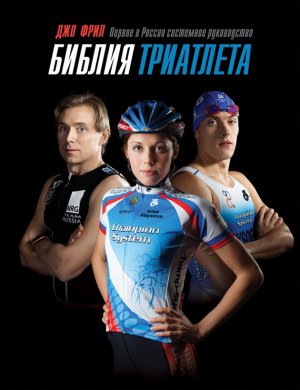
Anderson, O. The Search for the Perfect Intensity Distribution // Cycling Research News 1, no. 10 (2004): 1, 4Ц10.
Anderson, O. Things Your Parents Forgot to Tell You about Tapering // Running Research News 11, no. 7 (1995): 1Ц8.
Appell, H. J. et al. Supplementation of Vitamin E May Attenuate Skeletal Muscle Immobilization Atrophy // International Journal of Sports Medicine 18 (1997): 157Ц160.
Armsey, T. D., and Green, G. A. Nutrition Supplementation: Science vs. Hype // T he Physician and Sports Medicine 25, no. 6 (1997): 77Ц92.
Astrand, P. O., and Rohdahl, K. Textbook of Work Physiology. New York: McGraw-Hill, 1977.
Atwater, A. E. Gender Differences in Distance Running // Biomechanics of Distance Running / ed. P. R. Cavanagh. Champaign, IL: Human Kinetics, 1990.
Balaban, E. P. et al. The Frequency of Anemia and Iron Deficiency in the Runner // Medicine and Science in Sport and Exercise 21 (1989): 643Ц648.
Balsam, P. D. Creatine Supplementation Per Se Does Not Enhance Endurance Exercise Performance // Acta Physiologica Scandinavica 149, no. 4 (1993): 521Ц523.
Bemben, D. A. et al. Effects of Oral Contraceptives on Hormonal and Metabolic Responses during Exercise // Medicine and Science in Sport and Exercise 24, no. 4 (1992): 434Ц441.
Bernhardt, G. Training Plans for Multisport Athletes. Boulder, CO: VeloPress, 2000.
Billat, V. L. et al. Physical and Training Characteristics of Top-Class Marathon Runners // Medicine and Science in Sports and Exercise 33, no. 12 (2001): 2089Ц2097.
Blomstrand, E. et al. Administration of Branched Chain Amino Acids during Sustained Exercise Ц Effects on Performance and on Plasma Concentrations of Some Amino Acids // European Journal of Applied Physiology 63, no. 2 (1991): 83Ц88.
Bompa, T. From Childhood to Champion Athlete. Toronto, ON: Veritas Publishing, 1995.
Bompa, T. Periodization of Strength. Toronto, ON: Veritas Publishing, 1993.
Bompa, T. Physiological Intensity Values Employed to Plan Endurance Training // New Studies in Athletics 3, no. 4 (1988): 37Ц52.
Bompa, T. Theory and Methodology of Training. Dubuque, IA: Kendall/Hunt Publishing, 1994.
Bonen, A., and Belcastro, A. Comparison of Self-Selected Recovery Methods on Lactic Acid Removal Rates // Medicine and Science in Sports and Exercise 8 (1976): 176Ц178.
Borg, G. An Introduction to BorgТs RPE-Scale. Ithaca, NY: Movement Publications, 1985.
Bouchard, C., and Lortie, G. Heredity and Endurance Performance // Sports Medicine 1 (1984): 38Ц94.
Brenner, I. K. M. Infection in Athletes // Sports Medicine 17, no. 2 (1994): 86Ц107.
Broker, J. P., and Gregor, R. J. Cycling Biomechanics // High-Tech Cycling / ed. E. Burke. Champaign, IL: Human Kinetics, 1996.
Brown, C., and Wilmore, J. The Effects of Maximal Resistance Training on the Strength and Body Composition of Women Athletes // Medicine and Science in Sports and Exercise 6 (1974): 174Ц177.
Brunner, R., and Tabachnik, B. Soviet Training and Recovery Methods. Pleasant Hill, CA: Sport Focus Publishing, 1990.
Brzycki, M. Strength Testing Ц Predicting a One-Rep Max from Reps to Fatigue // Journal of Physical Education, Recreation and Dance 64 (1993): 88Ц90.
Budgett, R. Overtraining Syndrome // British Journal of Sports Medicine 24 (1990): 231Ц236.
Bull, S. J. Sports Psychology: A Self-Help Guide. Marlborough, UK: Crowood Press, 2000.
Bunt, J. C. et al. Sex and Training Differences in Human Growth Hormone Levels during Prolonged Exercise // Journal of Applied Physiology 61 (1986): 1796.
Burke, E. High-Tech Cycling. Champaign, IL: Human Kinetics, 1996.
Burke, E. Serious Cycling. Champaign, IL: Human Kinetics, 1995.
Burke, L. M., and Read, R. S. D. Dietary Supplements in Sport // Sports Medicine 15 (1993): 43Ц65.
Butts, N. K., Henry, B. A., and Mclean, D. Correlations between V02Max and Performance Times of Recreational Triathletes // Journal of Sports Medicine and Physical Fitness 31, no. 3 (1991): 339Ц344.
Cade, J. R. et al. Dietary Intervention and Training in Swimmers // European Journal of Applied Physiology 63 (1991): 210Ц215.
Cavanagh, P. R., and Sanderson, D. J. The Biomechanics of Cycling: Studies of the Pedaling Mechanics of Elite Pursuit Riders // Science of Cycling / ed. E. Burke. Champaign, IL: Human Kinetics, 1986.
Cavanagh, P. R. et al. A Biomechanical Comparison of Elite and Good Distance Runners // Annals of the New York Academy of Sciences 301 (1977): 328Ц345.
Cerra, F. B. et al. Branched-Chain Amino Acid Supplementation during Trekking at High Altitude // European Journal of Applied Physiology 65 (1984): 394Ц398.
Child, J. S. et al. Cardiac Hypertrophy and Function in Masters Endurance Runners and Sprinters // Journal of Applied Physiology 57 (1984): 170Ц181.
Clark. Red Meat: To Eat or Not to Eat // National Strength and Conditioning Association Journal 15 (1993): 71Ц72.
Clement, D. B. et al. Branched-Chain Metabolic Support: A Prospective, Randomized Double-Blind Trial in Surgical Stress // Annals of Surgery 199, no. 3 (1984): 286Ц291.
Cohen, J., and Gisolfi, C. V. Effects of Interval Training in Work-Heat Tolerance in Young Women // Medicine and Science in Sport and Exercise 14 (1982): 46Ц52.
Conley, D. L., and Krahenbuhl, G. Running Economy and Distance Running Performance of Highly Trained Athletes // Medicine and Science in Sports and Exercise 12, no. 5 (1980): 357Ц360.
Conley, D. L. et al. Following Steve Scott: Physiological Changes Accompanying Training // The Physician and Sports Medicine 12, no. 1 (1984): 103Ц106.
Cordain, L. Department of Exercise and Sport Science. Colorado State University, Fort Collins, CO (1998). Ћичное общение с автором.
Cordain, L. The Paleo Diet. New York: Wiley, 2002.
Cordain, L., and Friel, J. The Paleo Diet for Athletes. Emmaus, PA: Rodale, 2005.
Cordain, L., Gotshall, R. W., and Eaton, S. B. Evolutionary Aspects of Exercise // World Review of Nutrition and Dietetics 81 (1997): 49Ц60.
Costill, D. Predicting Athletic Potential: The Value of Laboratory Testing // Sports Medicine Digest 11, no. 11 (1989): 7.
Costill, D. et al. Adaptations to Swimming Training: Influence of Training Volume // Medicine and Science in Sports and Exercise 23 (1991): 371Ц377.
Costill, D. L. et al. Effects of Repeated Days of Intensified Training on Muscle Glycogen and Swimming Performanceї // Medicine and Science in Sport and Exercise 20 (1988): 249Ц254.
Coyle, E. F. et al. Cycling Efficiency Is Related to the Percentage of Type I Muscle Fibers // Medicine and Science in Sports and Exercise 24 (1992): 782.
Cunningham, D. A. et al. Cardiovascular Response to Intervals and Continuous Training in Women // European Journal of Applied Physiology 41 (1979): 187Ц197.
Daniels, J. DanielsТ Running Formula. 2nd edition. Champaign, Human Cinetics, 2005.
Daniels, J. Physiological Characteristics of Champion Male Athletes // Research Quarterly 45 (1989): 342Ц348.
Daniels, J. et al. Interval Training and Performance // Sports Medicine 1 (1984): 327Ц334.
David, A. S. et al. Post-Viral Fatigue Syndrome: Time for a New Approach // British Medical Journal 296 (1988): 696Ц699.
Davis, J. M. Carbohydrates, Branched-Chain Amino Acids, and Performance Ц the Central Fatigue Hypothesis // International Journal of Sport Nutrition 5 (1995): S29-S38.
Deuster, P. A. et al. Nutritional Survey of Highly Trained Women Runners // American Journal of Clinical Nutrition 45 (1986): 954Ц962.
De Vries, H. A. Effects of Various Warm-up Procedures on 100-Yard Times of Competitive Swimmers // Research Quarterly 30 (1959): 11Ц20.
DiCarlo, L. J. et al. Peak Heart Rates during Maximal Running and Swimming: Implications for Exercise Prescription // International Journal of Sports Medicine 12 (1991): 309Ц312.
Dill, D. et al. A Longitudinal Study of 16 Champion Runners // Journal of Sports Medicine 7 (1967): 4Ц32.
Dimsdale, J. et al. Postexercise Peril: Plasma Catecholamines and Exercise // Journal of the American Medical Association 251 (1984): 630Ц632.
Doherty, M. The Effects of Caffeine on the Maximal Accumulated Oxygen Deficit and Short-Term Running Performance // International Journal of Sports Nutrition 8, no. 2 (1998): 95Ц104.
Dragan, I., and Stonescu, I. Organism Recovery Following Training. Bucharest, Romania: Sport-Turism, 1978.
Drinkwater, B. L. Women and Exercise: Physiological Aspects // Exercise and Sports Sciences Reviews 12 (1984): 21Ц51.
Drinkwater, B. L. et al. Bone Mineral Content of Amenorrheic and Eumenorrheic Athletes // New England Journal of Medicine 311 (1984): 277Ц281.
Driver, H. S. et al. Prolonged Endurance Exercise and Sleep Disruption // Medicine and Science in Sports and Exercise 26, no. 7 (1994): 903Ц907.
Droghetti, P. et al. Noninvasive Determination of the Anaerobic Threshold in Canoeing, Cross-Country Skiing, Cycling, Roller and Ice Skating, Rowing and Walking // European Journal of Applied Physiology 53 (1985): 299Ц303.
Dufaux, B. et al. Serum Ferritin, Transferrin, Haptoglobin, and Iron in MiddleЦ and Long-Distance Runners, Elite Rowers, and Professional Racing Cyclists // International Journal of Sports Medicine 2 (1981): 43Ц46.
Dunbar, C. C. et al. The Validity of Regulating Exercise Intensity by Ratings of Perceived Exertion // Medicine and Science in Sports and Exercise 24 (1992): 94Ц99.
Dutto, D. J., and Cappaert, J. M. Biomechanical and Physiological Differences between Males and Females during Freestyle Swimming // Medicine and Science in Sports and Exercise 26, no. 5 (1994): 1098.
Eaton, S. B. Humans, Lipids, and Evolution // Lipids 27, no. 1 (1992): 814Ц820.
Eaton, S. ¬., and Konner, M. Paleolithic Nutrition: A Consideration of Its Nature and Current Implications // The New England Journal of Medicine 312, no. 5 (1985): 283Ц289.
Eaton, S. B., and Nelson, D. A. Calcium in Evolutionary Perspective // American Journal of Clinical Nutrition 54 (1991): 281SЦ287S.
Eaton, S. B., Shostak, M., and Konner, M. The Paleolithic Prescription. New York: Harper & Row, 1989.
Ekblom, B. Effect of Physical Training in Adolescent Boys // Journal of Applied Physiology 27 (1969): 350Ц353.
Elliott, R. The Competitive Edge. Mountain View, CA: TAFNEWS Press, 1991.
Ericsson, K. A., Krampe, R. T., and Heizmann, S. Can We Create Gifted People? // CIBA Foundation Symposium 178 (1993): 221Ц231.
Evans, M. Endurance AthleteТs Edge. Champaign, IL: Human Kinetics, 1997.
Evans, M. TriathleteТs Edge. Champaign, IL: Human Kinetics, 2003.
Evans, W. et al. Protein Metabolism and Endurance Exercise // The Physician and Sports Medicine 11, no. 7 (1983): 63Ц72.
Farber, H. W. et al. The Endurance Triathlon: Metabolic Changes after Each Event and during Recovery // Medicine and Science in Sports and Exercise 23, no. 8 (1991): 959Ц965.
Faria, I. E. Applied Physiology of Cycling // Sports Medicine 1 (1984): 187Ц204.
Farrell, P. A. et al. Enkephalins, Catecholamines, and Psychological Mood Alterations: Effects of Prolonged Exercise // Medicine and Science in Sports and Exercise 19 (1987): 347.
Female Endurance Athletes / ed. B. L. Drinkwater. Champaign, IL: Human Kinetics, 1986.
Fitzgerald, L. Exercise and the Immune System // Immunology Today 9, no. 11 (1988): 337Ц339.
Francis, K. T. et al. The Relationship between Anaerobic Threshold and Heart Rate Linearity during Cycle Ergometry // European Journal of Applied Physiology 59 (1989): 273Ц277.
Freeman, W. Peak When It Counts. Mountain View, CA: TAFNEWS Press, 1991.
Freuncl, B. J. et al. Glycerol Hyperhydration: Hormonal, Renal, and Vascular Fluid Responses // Journal of Applied Physiology 79 (1995): 2069Ц2077.
Friel, J. The CyclistТs Training Bible. 4-th edition. Boulder: VeloPress, 2009.
Fry, R. W. et al. Biological Responses to Overload Training in Endurance Sports // European Journal of Applied Physiology 64, no. 5 (1992): 335Ц344.
Fry, R. W. et al. Overtraining in Athletes: An Update // Sports Medicine 12, no. 1 (1991): 32Ц65.
Fry, R. W. et al. Periodization and the Prevention of Overtraining // Canadian Journal of Sports Science 17 (1992): 241Ц248.
Gibbons, E. S. The Significance of Anaerobic Threshold in Exercise Prescription // Journal of Sports Medicine 27 (1987): 357Ц361.
Gibbons, T. P. et al. Physiological Responses in Elite Junior Triathletes during Field Testing // Medicine and Science in Sports and Exercise 28, no. 5 (1996): SA756.
Gleeson, M. Biochemical and Immunological Markers of Overtraining // Journal of Sports Science and Medicine 1 (2002): 31Ц41.
Goedecke, J. H. et al. Effects of Medium-Chain Triaclyglycerol Ingested with Carbohydrate on Metabolism and Exercise Performance // International Journal of Sports Nutrition 9, no. 1 (1999): 35Ц47.
Goforth, H. W. et al. Simultaneous Enhancement of Aerobic and Anaerobic Capacity // Medicine and Science in Sports and Exercise 26, no. 5 (1994): 171.
Goldspink, D. F. The Influence of Immobilization and Stretch on Protein Turnover of Rat Skeletal Muscle // Journal of Physiology 264 (1977): 267Ц282.
Gonzalez, H., and Hull, M. L. Bivariate Optimization of Pedaling Rate and Crank-Arm Length in Cycling // Journal of Biomechanics 21, no. 10 (1988): 839Ц849.
Gonzalez, H., and Hull, M. L. Multivariable Optimization of Cycling Biomechanics // Journal of Biomechanics 22, no. 11Ц12 (1989): 1151Ц1161.
Graham, T. E., and Spriet, L. L. Caffeine and Exercise Performance // Sports Science Exchange 9, no. 1 (1996): 1Ц6.
Graham, T. E. et al. Metabolic and Exercise Endurance Effects of Coffee and Caffeine Ingestion // Journal of Applied Physiology 85, no. 3 (1998): 883Ц889.
Grandjean, A. C. Diets of Elite Athletes: Has the Discipline of Sports Nutrition Made an Impact? // Journal of Nutrition 127, no. 5 (1997): 874S-877S.
Green, D. R. et al. An Evaluation of Dietary Intakes of Triathletes: Are RDAs Being Met? // Brief Communications 89, no. 11 (1989): 1653Ц1654.
Guezennec, C. Y. et al. Increase in Energy Cost of Running at the End of a Triathlon // European Journal of Applied Physiology 73, no. 5 (1996): 440Ц445.
Guilland, J. C. et al. Vitamin Status of Young Athletes Including the Effects of Supplementation // Medicine and Science in Sport and Exercise 21 (1989): 441Ц449.
Hagberg, J. M. Physiological Implications of the Lactate Threshold // International Journal of Sports Medicine 5 (1984): 106Ц109.
Hamilton, N. et al. Changes in Sprint Stride Kinematics with Age in Masters Athletes // Journal of Applied Biomechanics 9 (1993): 15Ц26.
Harr, E. Triathlon Training in Four Hours a Week. Emmaus, PA: Rodale Sports, 2003.
Harris, R. C. et al. Elevation of Creatine in Resting and Exercised Muscle of Normal Subjects by Creatine Supplementation // Clinical Science 83, no. 3 (1992): 367Ц374.
Hawley, J. A., and Hopkins, W. G. Aerobic Glycolytic and Aerobic Lipolytic Power Systems: A New Paradigm with Implications for Endurance and Ultra-Endurance Events // Sports Medicine 20 (1995): 321Ц327.
Hawley, J. A. et al. Effects of Ingesting Varying Concentrations of Sodium on Fluid Balance during Exercise // Medicine and Science in Sport and Exercise 28, no. 5 (1996): S350.
Heath, G. A. Physiological Comparison of Young and Older Endurance Athletes // Journal of Applied Physiology 51, no. 3 (1981): 634Ц640.
Heath, G. W. et al. Exercise and the Incidence of Upper Respiratory Tract Infections // Medicine and Science in Sports and Exercise 23 (1991): 152.
Heath, G. W. et al. Exercise and Upper Respiratory Tract Infections: Is There a Relationship? // Sports Medicine 14, no. 6 (1992): 353Ц365.
Heil, D. P. et al. Cardiorespiratory Responses to Seat-Tube Angle Variation during Steady-State Cycling // Medicine and Science in Sports and Exercise 27, no. 5 (1995): 730Ц735.
Hemmert, M. K. et al. Effect of Plasma Volume on Exercise Stroke Volume in Normally Active and Endurance-Trained Men. ƒоклад на годовом собрании јмериканского колледжа спортивной медицины, 1985.
Hendy, H. M, and Boyer, B. J. Specificity in the Relationship between Training and Performance in Triathlons // Perception and Motor Skills 81, no. 3 (1995): 1231Ц1240.
Hermiston, R. T., and OТBrien, M. E. The Effects of Three Types of Warm-Up on the Total Oxygen Cost of a Short Treadmill Run // Training: Scientific Basis and Application / ed. A. W. Taylor. Springfield, IL: Charles C. Thomas, 1972.
Hickson, R. C. et al. Potential for Strength and Endurance Training to Amplify Endurance Performance // Journal of Applied Physiology 65 (1988): 2285Ц2290.
Hickson, R. C. et al. Strength Training Effects on Aerobic Power and Short-Term Endurance // Medicine and Science in Sports and Exercise 12 (1980): 336Ц339.
Hoffman-Goetz, L., and Peterson, B. K. Exercise and the Immune System: A Model of the Stress Response // Immunology Today 15, no. 8 (1994): 382Ц387.
Holly, R. G. et al. Stretch-Induced Growth in Chicken Wing Muscles: A New Model of Stretch Hypertrophy // American Journal of Physiology 1 (1980): C62-C71.
Hooper, S. L., and MacKinnon, L. T. Monitoring Overtraining in Athletes: Recommendations // Sports Medicine 20, no. 5 (1995): 321Ц327.
Hooper, S. L. et al. Hormonal Responses of Elite Swimmers to Overtraining // Medicine and Science in Sports and Exercise 25 (1993): 741Ц747.
Hooper, S. L. et al. Markers for Monitoring Overtraining and Recovery // Medicine and Science in Sports and Exercise 27, no. 1 (1995): 106Ц112.
Hopkins, W. G. Advances in Training for Endurance Athletes // New Zealand Journal of Sports Medicine 24, no. 3 (1996): 29Ц31.
Horowitz, J. E. et al. Pre-Exercise Medium-Chain Triglyceride Ingestion Does Not Alter Muscle Glycogen Use during Exercise // Journal of Applied Physiology 88, no. 1 (2000): 219Ц225.
Hortobagyi, T. et al. Effects of Simultaneous Training for Strength and Endurance on UpperЦ and Lower-Body Strength and Running Performance // The Journal of Sports Medicine and Physical Fitness 31 (1991): 20Ц30.
Houmard, J., and Johns, R. Effects of Taper on Swim Performance // Sports Medicine 17 (1994): 224Ц232.
Houmard, J. et al. The Effect of Warm-Up on Responses to Intense Exercise // International Journal of Sports Medicine 12, no. 5 (1991): 400Ц403.
Houmard, J. et al. The Effects of Taper on Performance in Distance Runners // Medicine and Science in Sports and Exercise 26, no. 5 (1994): 624Ц631.
Houmard, J. A. et al. Testosterone, Cortisol, and Creatine Kinase Levels in Male Distance Runners during Reduced Training // International Journal of Sports Medicine 11 (1990): 41.
Howe, M. J. J., Davidson, W., and Sluboda, J. A. Innate Talents: Reality or Myth? // Behavior and Brain Science 21, no. 3 (1998): 399Ц407.
Hu, F. B. et al. Dietary Fat Intake and the Risk of Coronary Heart Disease in Women // New England Journal of Medicine 337, no. 21 (1997): 1491Ц1499.
Huddle, P., and Frey, R. Triathlon: Starting Out. Oxford, UK: Meyer & Meyer Sport, 2003.
International Dance and Exercise Association. Antioxidants: Clearing the Confusion // IDEA Today, September 1994, 67Ц73.
Ivy, J. L. et al. Muscle Respiratory Capacity and Fiber Type as Determinants of the Lactate Threshold // Journal of Applied Physiology 48 (1980): 523Ц527.
Jackson, S. A., and Csikszentmihalyi, M. Flow in Sports. Champaign, IL: Human Kinetics, 1999.
Janssen, P. G. J. M. Training Lactate, Pulse Rate. Oulu, Finland: Polar Electric Oy, 1987.
Jansson, E., and Kaijser, L. Effect of Diet on Muscle Glycogen and Blood Glucose Utilization during a Short-Term Exercise in Man // Acta Physiologica Scandinavica 115, no. 3 (1982): 341Ц347.
Jeulcendrup, A. E. et al. Physiological Changes in Male Competitive Cyclists after Two Weeks of Intensified Training // International Journal of Sports Medicine 13, no. 7 (1992): 534Ц541.
Johnston, R. E. et al. Strength Training for Female Distance Runners: Impact on Economy // Medicine and Science in Sports and Exercise 27, no. 5 (1995): S47.
Kanter, M. M. Free Radicals, Exercise, and Antioxidant Supplementation // International Journal of Sport Nutrition 4 (1994): 205Ц220.
Karvonen, J. Importance of Warm-Up and Cool Down in Exercise Performance // Medicine in Sports Training and Coaching. Dasel, Germany: Karger, 1992.
Keast, D. et al. Exercise and the Immune Response // Sports Medicine 5 (1988): 248Ц267.
Keul, J. et al. Energy Metabolism of Human Muscle. Baltimore: University Park Press, 1972.
Kirwan, J. P. et al. Physiological Responses to Successive Days of Intense Training in Competitive Swimmers // Medicine and Science in Sport and Exercise 20 (1988): 255Ц259.
Knuttgen, H. G. et al. Physical Conditioning through Interval Training with Young Male Adults // Medicine and Science in Sports 5 (1973): 220Ц226.
Kokkonen, J., and Lauritzen, S. Isotonic Strength and Endurance Gains through PNF Stretching // Medicine and Science in Sports and Exercise 27, no. 5 (1995): S127.
Koltyn, K. F., OТConnor, P. J., and Morgan, W. P. Perception of Effort in Female and Male Competitive Swimmers // International Journal of Sports Medicine 12 (1991): 427Ц429.
Korkia, D. S. et al. An Epidemiological Investigation of Training and Injury Patterns in British Triathletes // British Journal of Sports Medicine 28 (1994): 191Ц196.
Koutedakis, Y. Seasonal Variation in Fitness Parameters in Competitive Athletes // Sports Medicine 19 (1995): 373Ц392.
Koutedakis, Y., Budgett, R., and Faulmann, L. Rest in Underperforming Elite Competitors // British Journal of Sports Medicine 24 (1990): 248Ц252.
Kovacs, E. M. R. et al. Effect of Caffeinated Drinks on Substrate Metabolism, Caffeine Excretion and Performance // Journal of Applied Physiology 85, no. 2 (1998): 709Ц715.
Kraemer, W. J. et al. Compatibility of High-Intensity Strength and Endurance Training on Hormonal and Skeletal Muscle Adaptations // Journal of Applied Physiology 78, no. 3 (1995): 976Ц989.
Kuipers, H., and Keizer, H. A. Overtraining in Elite Athletes: Review and Directions for the Future // Sports Medicine 6 (1988): 79Ц92.
Kuipers, H. et al. Comparison of Heart Rate as a NonЦ Invasive Determination of Anaerobic Threshold with Lactate Threshold when Cycling // European Journal of Applied Physiology 58 (1988): 303Ц306.
Lambert, E. V. et al. Enhanced Endurance in Trained Cyclists during Moderate-Intensity Exercise following Two Weeks Adaptation to a High-Fat Diet // European Journal of Applied Physiology 69 (1994): 287Ц293.
Lambert, E. V. et al. Nutritional Strategies for Promoting Fat Utilization and Delaying the Onset of Fatigue during Prolonged Exercise // Journal of Sports Science 15, no. 3 (1997): 315Ц324.
Lapachet, R. A. et al. Body Fat and Exercise Endurance in Trained Rats Adapted to a High-Fat and/or High-Carbohydrate Diet // Journal of Applied Physiology 80, no. 4 (1996): 1173Ц1179.
Laughlin, T., and Delves, J. Total Immersion. New York: Simon & Schuster, 1996.
Leake, C. N., and Carter, J. E. Comparison of Body Composition and Somatotype of Trained Female Triathletes // Journal of Sports Science 9, no. 2 (1991): 125Ц135.
Legwold, G. Masters Competitors Age Little in Ten Years // The Physician and Sports Medicine 10, no. 10 (1982): 27.
Lehmann, M. et al. Overtraining in Endurance Athletes: A Brief Review // Medicine and Science in Sports and Exercise 25, no. 7 (1993): 854Ц862.4.
Lehmann, M. P. et al. Training-Overtraining: An Overview and Experimental Results in Endurance Sports // Journal of Sports Medicine and Physical Fitness 37, no. 1 (1997): 7Ц17.
Lehmann, M. P. et al. Training-Overtraining: Influence of a Defined Increase in Training Volume vs. Training Intensity on Performance, Catecholomines and Some Metabolic Parameters in Experienced MiddleЦ and Long-Distance Runners // European Journal of Applied Physiology 64 (1992): 169Ц177.
Lemon, P. W. R. Is Increased Dietary Protein Necessary or Beneficial for Individuals with a Physically Active Lifestyle? // Nutrition Reviews 54, no. 4 (1996): S169-S175.
Lemon, P. W. R. Protein and Amino Acid Needs of the Strength Athlete // International Journal of Sports Nutrition 1 (1991): 127Ц145.
Loehr, J. Mental Toughness Training for Sports. New York: Stephen Greene Press, 1982.
Loehr, J. The New Mental Toughness Training for Sports. New York: Penguin Books, 1995.
Lynch, J. Creative Coaching. Champaign, IL: Human Kinetics, 2001.
Lynch, J. Running Within. Champaign, IL: Human Kinetics, 1999.
Lynch, J. Thinking Body, Dancing Mind. New York: Bantam Books, 1992.
Lynch, J. The Total Runner. Upper Saddle River, NJ: Prentice Hall, 1987.
Lynch, J., and Huang, C. A. Working Without, Working Within. New York: Tarcher & Putnam, 1998.
MacDougal, J. D. et al. The Time Course for Elevated Muscle Protein Synthesis following Heavy Resistance Exercise // Canadian Journal of Applied Physiology 20, no. 4 (1995): 480Ц486.
MacIntyre, J. G. Growth Hormone and Athletes // Sports Medicine 4 (1987): 129.
MacLaren, C. P. et al. A Review of Metabolic and Physiologic Factors in Fatigue // Exercise and Sports Science Review 17 (1989): 29.
Maglischo, E. Swimming Faster. Mountain View, CA: Mayfield, 1982.
Malarkey, W. B. et al. The Influence of Age on Endocrine Responses to Ultraendurance Stress // Journal of Gerontology 48, no. 4 (1993): M134Ц139.
Malwa, R. M. Growth and Maturation: Normal Variation and Effect of Training // Perspectives in Exercise Science and Sports Medicine: Youth, Exercise and Sport / ed. C. V. Gisolfi, D. R. Lamb. Carmel, IN: Benchmark Press, 1989.
Marcinik, E. J. et al. Effects of Strength Training on Lactate Threshold and Endurance Performance // Medicine and Science in Sports and Exercise 23, no. 6 (1991): 739Ц743.
Martin, D. E., and Coe, P. N. Better Training for Distance Runners. Champaign, IL: Human Kinetics, 1997.
Martin, D. E., and Coe, P. N. Training Distance Runners. Champaign, IL: Leisure Press, 1991.
Matzen, L. E. et al. Different Short-Term Effects of Protein and Carbohydrate Intake on TSH, GH, Insulin and Glucagon // Scandinavian Journal of Clinical and Laboratory Investigation 50, no. 11 (1990): 801Ц805.
Maughan, R. J. Creatine Supplementation and Exercise Performance // International Journal of Sports Nutrition 5 (1995): 94Ц101.
Mayhew, J., and Gross, P. Body Composition Changes in Young Women and High Resistance Weight Training // Research Quarterly 45 (1974): 433Ц440.
McArdle, W., Katch, F., and Katch, V. Exercise Physiology. Baltimore: Williams & Wilkins, 1996.
McCarthy, J. P. et al. Compatibility of Adaptive Responses with Combining Strength and Endurance Training // Medicine and Science in Sports and Exercise 27, no. 3 (1995): 429Ц436.
McMurtrey, J. J., and Sherwin, R. History, Pharmacology and Toxicology of Caffeine and Caffeine-Containing Beverages // Clinical Nutrition 6 (1987): 249Ц254.
Messier, S. P., and Cirillo, K. J. Effects of a Verbal and Visual Feedback System on Running Technique, Perceived Exertion, and Running Economy in Female Novice Runners // Medicine and Science in Sports and Exercise 21, no. 2 (1989): 80.
Milne, C. The Tired Athlete // New Zealand Journal of Sports Medicine 19, no. 3 (1991): 42Ц44.
Mora, J. Triathlon 101. Champaign, IL: Human Kinetics, 1999.
Morgan, D. W. et al. Effect of Step-Length Optimization on the Aerobic Demand of Running // Journal of Applied Physiology 77 (1994): 245.
Morgan, D. W. et al. Effects of a Prolonged Maximal Run on Running Economy and Running Mechanics // Medicine and Science in Sports and Exercise 21, no. 2 (1989): 26.
Mujika, I., and Padilla, S. Creatine Supplementation as an Ergogenic Aid for Sports Performance in Highly Trained Athletes: A Critical Review // International Journal of Sports Medicine 18, no. 7 (1997): 491Ц496.
Muoio, D. M. et al. Effect of Dietary Fat on Metabolic Adjustments to Maximal V02 and Endurance in Runners // Medicine and Science in Sports and Exercise 26 (1994): 81Ц88.
Nagao, N. et al. Energy Intake in the Triathlon Competition by Means of Cluster Analysis // Journal of Sports Medicine and Physical Fitness 31, no. 1 (1991): 62Ц66.
Nelson, A. G. et al. Consequences of Combining Strength and Endurance Training Regimens // Physical Therapy 70 (1990): 287Ц294.
Nelson, A. G. et al. Muscle Glycogen Supercompensation Is Enhanced by Prior Creatine Supplementation // Medicine and Science in Sports and Exercise 33, no. 7 (2001): 1096Ц1100.
